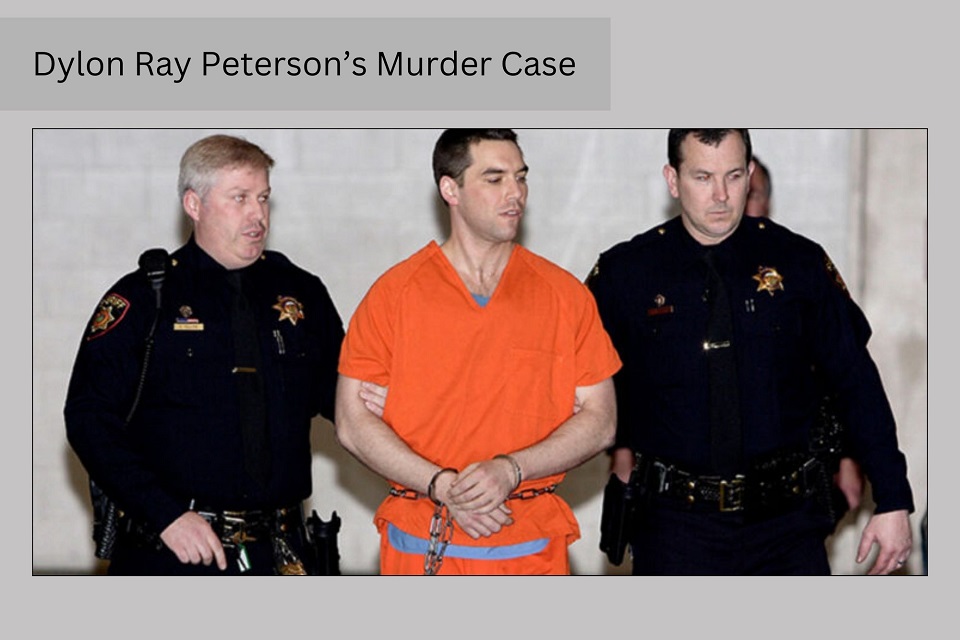Dylon Ray Peterson: A Shocking Murder Case In 2007 That Calls For Justice
The 2007 murder of Dylon Ray Peterson remains one of the most harrowing cases to emerge from Brookfield, Wisconsin. Peterson, an 18-year-old with a promising future, was tragically taken from his community in a violent crime that sent shockwaves across the town and beyond. This article revisits the events of that fateful summer, the intense investigation that ensued, the courtroom drama, and the lasting impact Peterson’s death has had on his community.
Who Was Dylon Ray Peterson?
Dylon Ray Peterson was known for his kind personality, academic achievements, and future ambitions. He graduated from Brookfield High School and planned to attend the University of Wisconsin-Madison in the fall. The murder of such a young and well-liked individual left his family, friends, and the entire Brookfield community grappling with disbelief and sorrow. Brookfield, a place known for its quiet and safe neighborhoods, would soon find itself in the national spotlight due to the brutal nature of the crime.
Dylon’s Murder Case
In July 2007, Peterson disappeared after leaving a friend’s house, leading his parents to report him missing. A massive search was launched by the community and law enforcement, hoping to find him alive. Sadly, two days later, Peterson’s body was discovered in a wooded area on the outskirts of town. The crime scene painted a grim picture, revealing that Peterson had been violently attacked, raising suspicions of a deliberate act of aggression.
Investigation Process
The investigation into Peterson’s murder was intense, involving local law enforcement, state authorities, and forensic experts. Police collected critical evidence at the crime scene, including personal items belonging to Peterson and DNA samples. Forensic analysis became the backbone of the investigation, and as authorities pieced together the timeline of events, they grew closer to identifying a potential suspect.
Arresting The Suspects
The investigation quickly honed in on several individuals who had been in contact with Peterson in the days leading up to his murder. Among them was Michael Rinehart, a 19-year-old with a troubled history and a reputation for violence. Witnesses placed Rinehart with Peterson on the night of his disappearance, and as the investigation progressed, more incriminating evidence surfaced. Witness testimonies and cell phone records further implicated Rinehart, and forensic evidence ultimately placed him at the scene of the crime.
Rinehart’s Trial Period
Rinehart’s arrest marked a significant turning point in the case. Although he initially denied involvement, the mounting evidence against him was irrefutable. DNA evidence connected him to the crime, and inconsistencies in his alibi further weakened his defense. Eventually, Rinehart confessed to the murder, stating that a heated argument had escalated into violence.
The trial drew substantial media attention. The prosecution presented a compelling case, highlighting the meticulous evidence linking Rinehart to Peterson’s murder. Expert testimonies and forensic analysis revealed the extent of the crime and helped solidify the prosecution’s argument. The defense, while attempting to argue for a lesser charge by citing Rinehart’s troubled background and mental health challenges, ultimately could not sway the jury.
In the end, Rinehart was found guilty of first-degree murder and sentenced to life in prison without the possibility of parole. For Peterson’s family and the community, the verdict brought a sense of justice, though the pain of losing a loved one would never fully subside.
Dylon Ray Peterson’s Murder Impact On Society
The tragic death of Dylon Ray Peterson left an indelible mark on the Brookfield community. His family established a scholarship foundation in his name, aimed at supporting local students and promoting youth development programs. This foundation became a symbol of Peterson’s legacy, honoring his memory through opportunities for others.
The case also spurred discussions about safety, mental health, and violence prevention. Community members and local authorities began advocating for stronger support systems for troubled youth, recognizing the importance of intervention to prevent future tragedies. The memory of Peterson’s life serves as a stark reminder of the impact of unchecked anger and violence, inspiring ongoing efforts to foster safer, more compassionate communities.
Conclusion
The 2007 murder case of Dylon Ray Peterson is a powerful and painful chapter in Brookfield’s history. The intense investigation, rigorous trial, and ultimate verdict highlighted the importance of forensic evidence and thorough police work in the pursuit of justice. Although justice was served, the loss of Peterson continues to be felt deeply by those who knew him and by a community that came together in the face of tragedy. The legacy of Dylon Ray Peterson lives on as a call to action against violence, a testament to a life tragically cut short but never forgotten.
FAQs
What happened to Dylon Ray Peterson?
Dylon Ray Peterson, an 18-year-old from Brookfield, Wisconsin, was murdered in July 2007. His body was discovered in a wooded area two days after he was reported missing. The crime led to an intense investigation and the eventual conviction of Michael Rinehart, who received a life sentence.
Who was convicted of Dylon Ray Peterson’s murder?
Michael Rinehart, a 19-year-old with a troubled past, was convicted of first-degree murder in connection with Dylon Ray Peterson’s death. Forensic evidence and witness testimonies were key in securing his conviction.
What impact did Dylon Ray Peterson’s death have on the community?
Peterson’s death profoundly affected the Brookfield community, leading to discussions about mental health, violence prevention, and community safety. His family established a foundation in his memory, providing scholarships to local students and supporting initiatives aimed at reducing youth violence.





